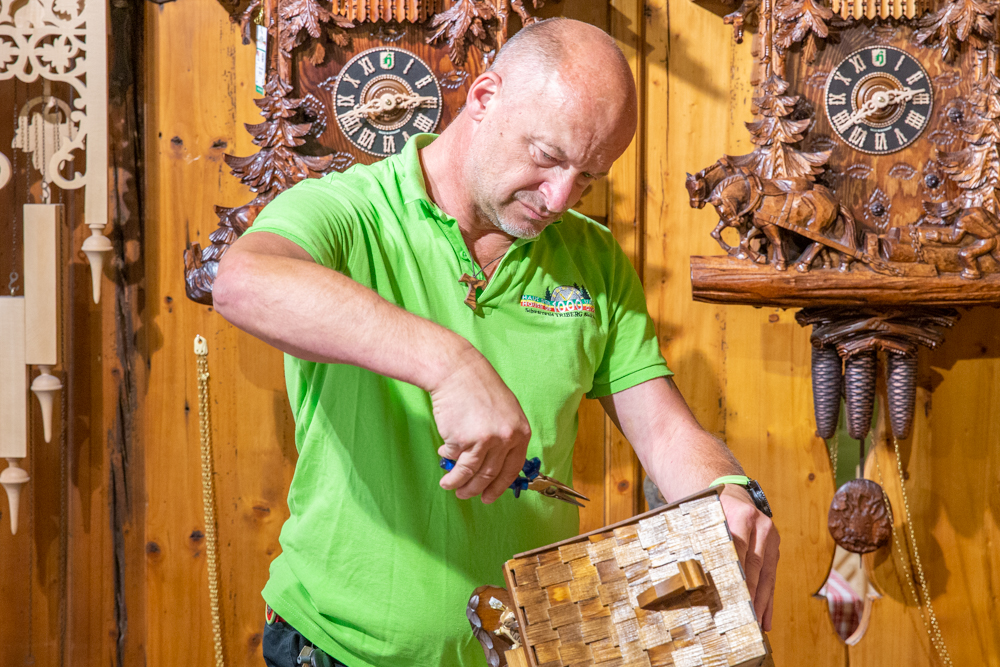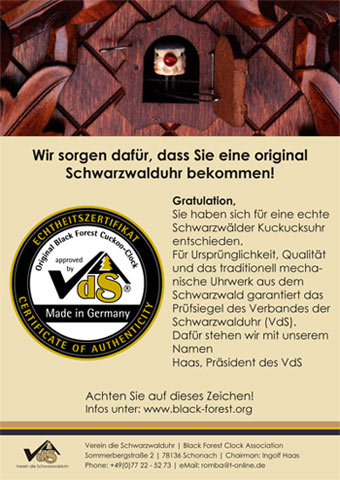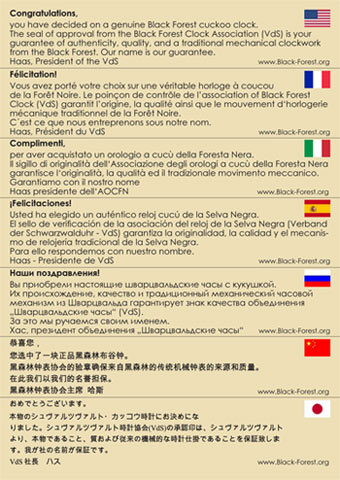Straw weavers, spoonsmiths, pipe- and barrel-makers, weavers and dyers, all of these craftsmen earned their living through their skilled handwork during the late 1600's in the Black Forest. The small farmers, though, also sought for additional means of bitterly necessary sustenance during the long winter months while farm work was very limited.
History of the Cuckoo Clock
The beginning: wooden wheel clocks
Typical of those hard times, Franz Ketter from Schönwald (born approx. 1667) and Simon Dilger from Schollach (born approx. 1672) “a poor farmer and a lathe-turner” combined their skills and began to build wooden-gear clocks.
Drawing design, mathematical calculation and prototype modelling were the main subjects. Practical skills were developed in a mechanical workshop and a clock cabinet workshop. In this way, not only could the quality of the clocks be continually improved, but a standardization of the clock production also resulted. This earlier clockmaking school made the way for the present technical college in Furtwangen, which has a well-known positive reputation throughout all of Germany.
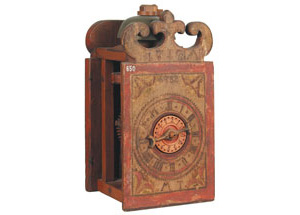
The first edition of the Black Forest Cuckoo Clock
“Cuckoo, Cuckoo” the pert little bird announces the time that the clock has struck. The idea for the development of the Black Forest Cuckoo Clock was probably brought to the area through glass salesmen from Strasburg. In the famous artistical Strasburger cathedral clock, a rooster crows every hour to announce the hour time. In any case, around 1750 the so-called “Schottenuhr” clock design (special Black Forest painted wooden shield clock) began to appear with a cuckoo that came out of a small door at the top of the clock face, proclaiming the time every hour. These clocks were highly coveted and extremely expensive rarities. Soon a new variety of the cuckoo clock was developed with a brown-stained, oak clockface in the shape of a railroad-house.
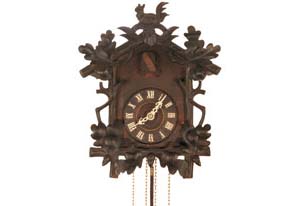
The Development of the Clockmaker Craft
Wooden-gear clocks with a set of scale weights on top to control the movement of the gears were produced at that time in the Black Forest. The very fine and artistically crafted details on the clocks were due to the influence from neighboring France. It was due to this that Friedrich Dilger from Urach moved to France for a year in 1712, in order to learn as much as he could from the french clockscraftsmen. On his return trip, he brought back many new construction ideas and various new production tools for the clockmaking trade.
The impact and importance of the clockmaking industry grew to such a point that in 1808, in Triberg and the surrounding ten communities, 790 citizens earned their living from the clock manufacturing business. In Gütenbach alone, with a population at that time of 833, there were 96 clockmakers, ten clockframe makers, clockhand- and instrument- makers, 14 clockface painters, casters, etc., not to mention, 61 clock merchants. Due to this boom, the Great Ducal Badish Clockmaker School was grounded in Furtwangen in 1850. The school's first director was Robert Gerwig, the later founder of the Black Forest and Gotthard Railroad Lines.

The Black Forest Cucuck Clock in the new Millenium
Today this world-known, wood-carved Black Forest Cuckoo Clock is produced in the same form as in the beginning. The carvings vary according to design: carved leaves, hunter design, or a miniature house. Many “extras” have been added to enhance the clock design: e.g. 7-day clock movement, turnoff switch and the choice of a music box built into the clock. As can be seen, the Black Forest Clock is far more than a beautiful souvenir – this clock has impacted the development of our area in a large way.
